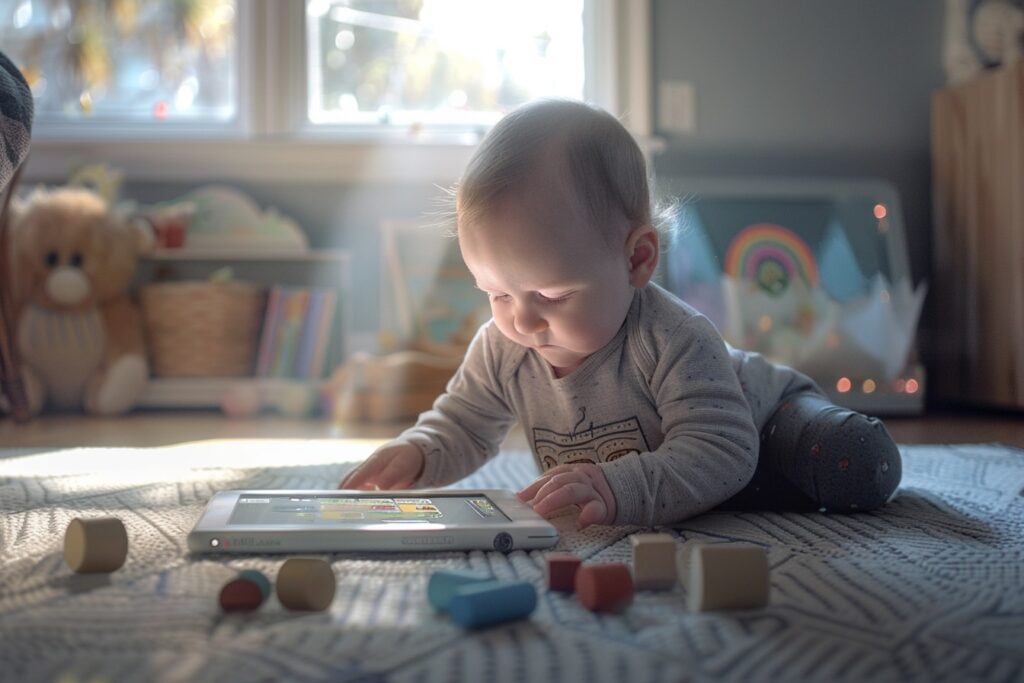Table of Contents
ToggleNurturing Minds: Balancing Montessori Principles with Modern Technology for Babies
Inspiring and Intriguing Introduction:
As parents, we are entrusted with the profound responsibility of shaping the minds and hearts of our little ones, guiding them through the wondrous journey of early childhood development. For me, this journey has been a rich tapestry woven with threads of Caribbean culture and the guiding light of Montessori principles. In a world pulsating with digital innovation, the intersection of tradition and technology presents both challenges and opportunities, particularly when it comes to navigating screen time for babies.
Picture this: a cozy afternoon bathed in the warm hues of a Caribbean sunset, the gentle rhythm of waves lulling us into a state of tranquility. Amidst this idyllic setting, my little one reaches out with eager hands, drawn to the captivating glow of a digital screen. In that moment, I found myself at a crossroads, grappling with the age-old question: how do we embrace the wonders of technology without compromising the essence of Montessori philosophy?
My journey as a parent blogger has been shaped by this very question, as I seek to bridge the gap between tradition and innovation, intuition and information. Through the lens of Caribbean culture, with its vibrant tapestry of storytelling and community spirit, I’ve embarked on a quest to unravel the complexities of screen time for babies within the framework of Montessori education.
Join me as we embark on a voyage of discovery, navigating the currents of modernity while staying anchored to the timeless wisdom of Maria Montessori. Together, we’ll explore the delicate balance between hands-on exploration and digital engagement, weaving a narrative that celebrates the boundless potential of our little ones’ minds.
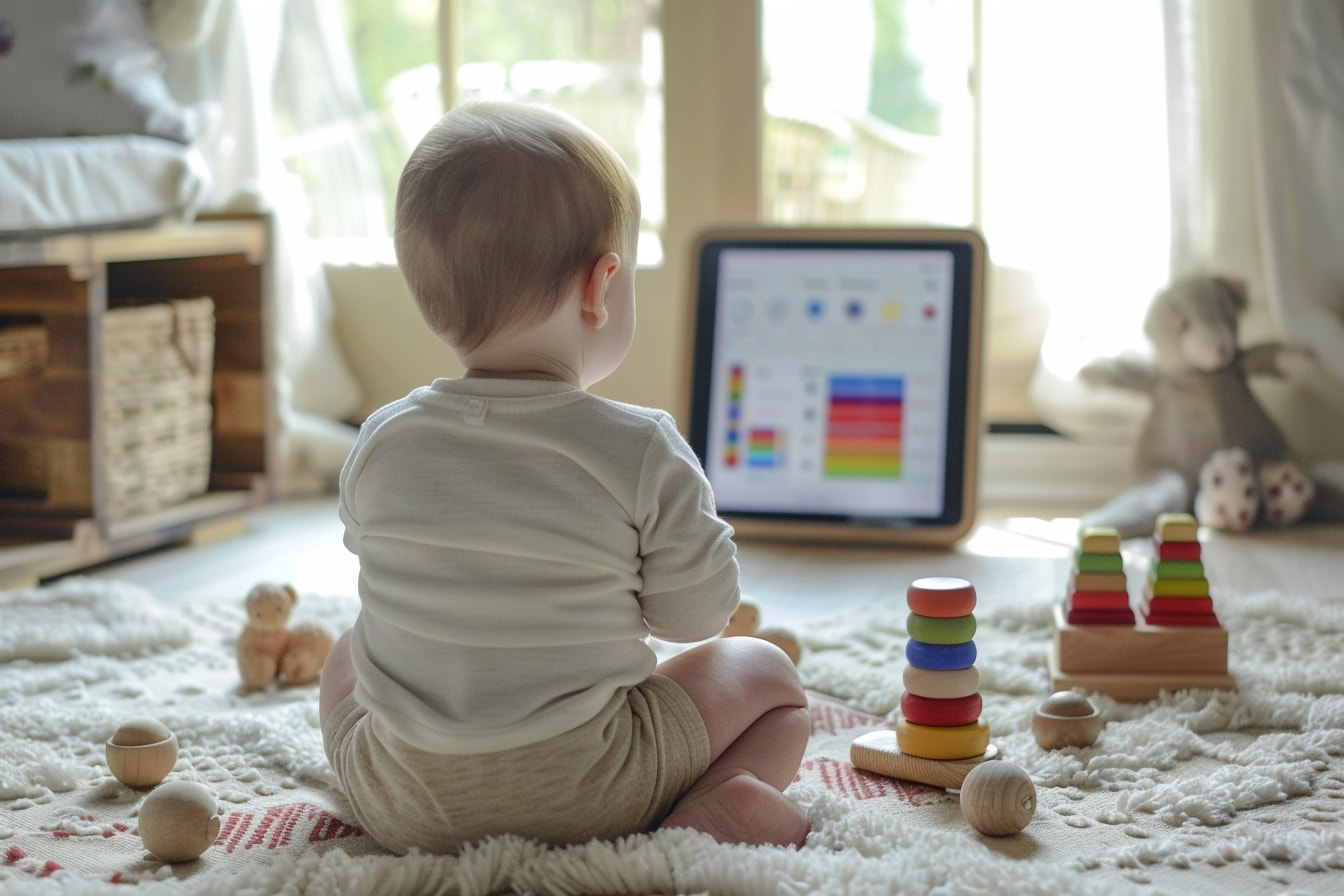
Embracing the Montessori Approach to Technology
At the heart of Montessori philosophy lies a profound reverence for the innate curiosity and boundless potential of the child. Rooted in principles of self-directed learning and hands-on exploration, Montessori education offers a holistic approach to nurturing young minds. As parents navigating the digital landscape, we are tasked with integrating technology in a manner that honors these foundational principles, fostering a harmonious relationship between tradition and innovation.
One of the cornerstone principles of Montessori education is the belief in the child as an active participant in their own learning journey. From the moment they enter the world, babies are driven by an insatiable thirst for discovery, eagerly reaching out to explore the sights, sounds, and textures of their environment. By embracing this natural inclination towards exploration, we can harness the power of technology as a tool for facilitating hands-on learning experiences.
Picture a baby eagerly manipulating a touchscreen device, their chubby fingers dancing across the surface with a sense of wonder and delight. In this digital age, technology has become an integral part of our daily lives, offering a wealth of opportunities for enriching sensory experiences and interactive learning. From educational apps designed to stimulate cognitive development to interactive toys that encourage exploration and discovery, the possibilities are as vast as the imagination itself.
As parents, our role is to serve as facilitators and guides, curating a learning environment that inspires curiosity and fosters independence. By integrating technology in a purposeful and intentional manner, we can create opportunities for our little ones to engage in meaningful learning experiences that align with Montessori principles.
But what does it mean to embrace the Montessori approach to technology in practice? It means striking a delicate balance between digital engagement and hands-on exploration, ensuring that technology serves as a tool for enriching the learning environment rather than replacing it. It means choosing educational apps and interactive media that stimulate the senses and encourage active participation, rather than passive consumption.
Ultimately, embracing the Montessori approach to technology is about honoring the innate wisdom of the child, trusting in their natural capacity for self-directed learning and discovery. By infusing our digital interactions with the spirit of Montessori philosophy, we can create a learning environment that celebrates the unique strengths and potential of each and every child.
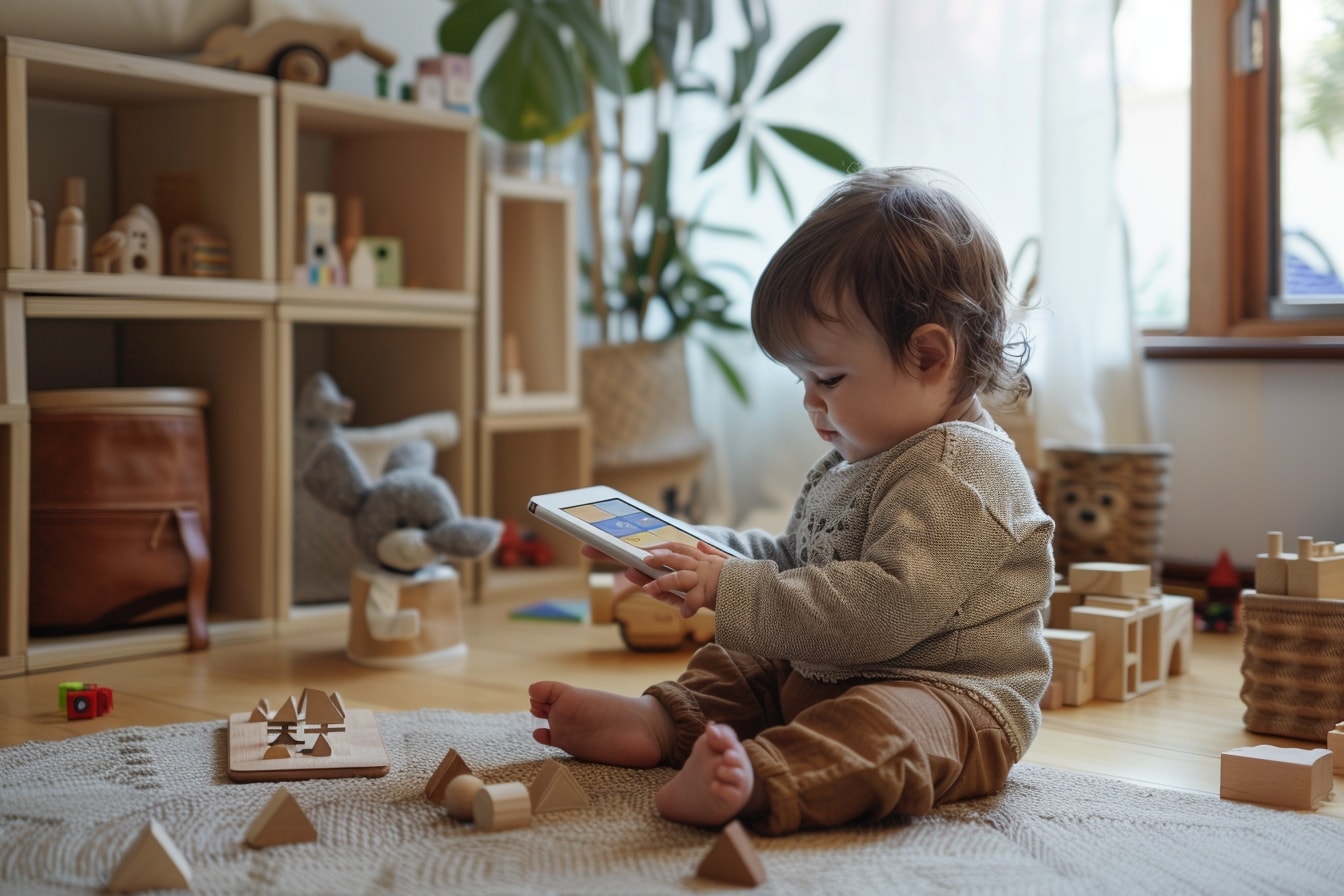
Integrating Technology with Montessori Philosophy
As we embark on the journey of parenthood, we are confronted with an ever-expanding array of technological marvels vying for our attention and that of our little ones. In the realm of Montessori education, where the principles of hands-on exploration and self-directed learning reign supreme, the integration of technology may seem like a daunting proposition. However, by embracing a mindful and intentional approach, we can harness the power of technology to enrich the Montessori experience for our children.
At its core, Montessori philosophy emphasizes the importance of creating an environment that is conducive to the natural development of the child. Central to this philosophy is the belief that children learn best through active engagement with their surroundings, using all of their senses to explore and discover the world around them. In this context, technology can serve as a valuable tool for enhancing the learning environment, providing opportunities for children to engage in interactive and experiential learning experiences.
One of the key principles of Montessori education is the idea of following the child’s lead, allowing them to pursue their interests and passions at their own pace. When it comes to integrating technology into the Montessori classroom or home environment, this principle remains paramount. Rather than imposing technology on children, we must observe their natural inclinations and interests, seeking out digital resources that align with their individual needs and preferences.
For example, a child who shows a keen interest in animals may benefit from interactive apps or multimedia resources that allow them to learn about different species and their habitats. Similarly, a child who demonstrates an aptitude for problem-solving and logic may thrive with educational games or coding activities designed to stimulate critical thinking skills.
Another key aspect of Montessori philosophy is the idea of fostering independence and self-reliance in children. By empowering children to take an active role in their own learning, we can instill in them a sense of confidence and agency that will serve them well throughout their lives. When integrating technology into the Montessori environment, it is important to provide children with opportunities for hands-on exploration and experimentation, allowing them to take ownership of their learning experiences.
Ultimately, the integration of technology with Montessori philosophy is not about replacing traditional learning methods, but rather enhancing them. By approaching technology with a spirit of mindfulness and intentionality, we can create a learning environment that honors the unique strengths and capabilities of each child, fostering a lifelong love of learning and exploration.
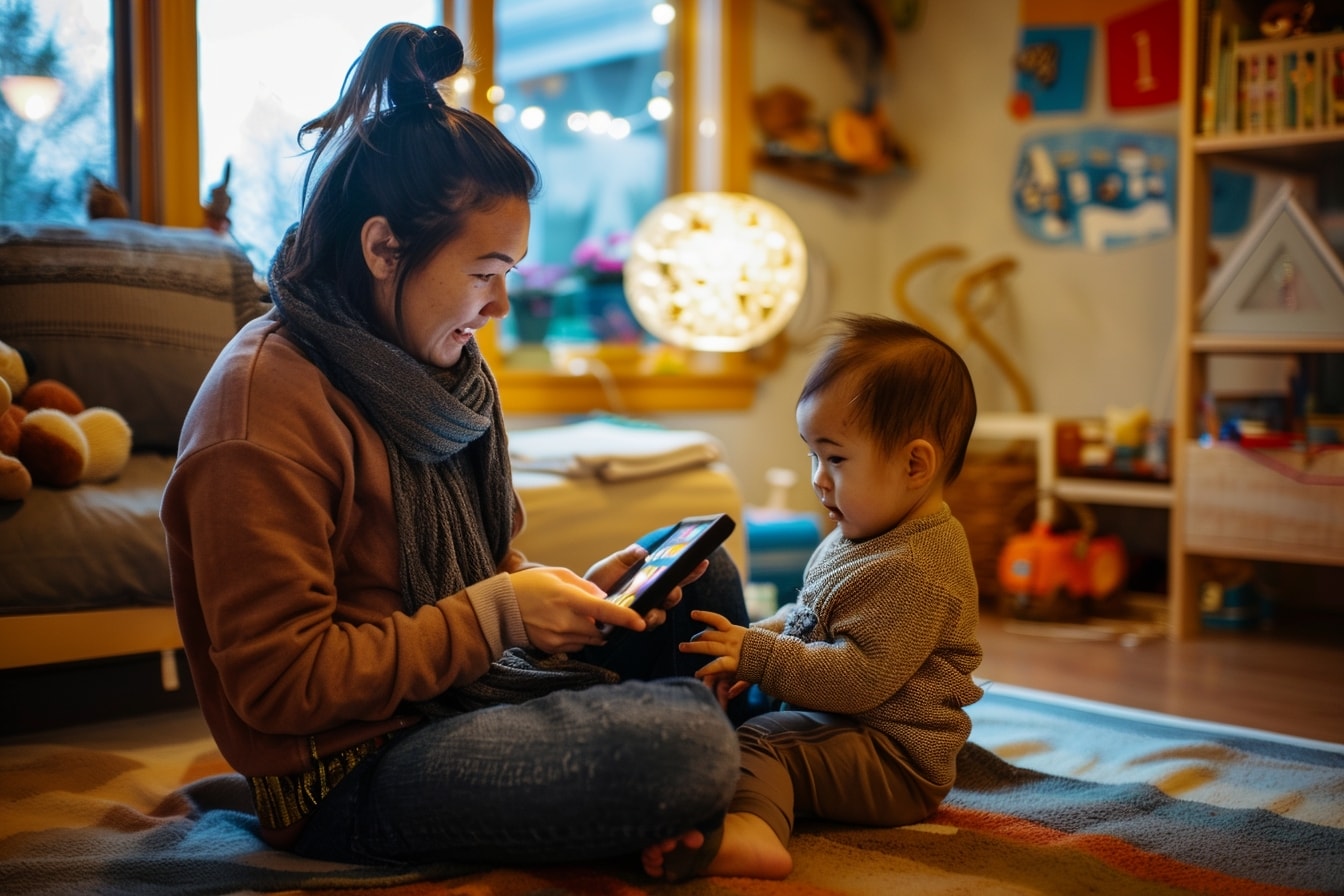
Challenges and Solutions
As we navigate the intricate dance between tradition and innovation in our journey as parents, we inevitably encounter a myriad of challenges when it comes to integrating technology into the Montessori environment. From concerns about overstimulation to the fear of undermining the principles of self-directed learning, these challenges can seem daunting at times. However, by approaching them with an open mind and a spirit of creativity, we can uncover innovative solutions that honor the core tenets of Montessori philosophy.
- Challenge: Overstimulation
- Solution: Establishing Screen-Free Zones and Time Limits
- Challenge: Dependency on Technology
- Solution: Encouraging Balanced Activities and Interactions
- Challenge: Finding Age-Appropriate Content
- Solution: Curating High-Quality Educational Resources
In today’s hyper-connected world, the constant barrage of digital stimuli can be overwhelming for young children, leading to issues of overstimulation and sensory overload. Many parents worry that excessive exposure to screens may hinder their child’s ability to focus and concentrate, undermining the principles of Montessori education.
One effective solution to combat overstimulation is to establish designated screen-free zones within the home, where children can engage in hands-on exploration and imaginative play free from digital distractions. Additionally, setting clear time limits for screen use can help ensure that technology remains a supplement rather than a substitute for real-world experiences.
Another common concern among parents is the potential for children to become overly dependent on technology for entertainment and learning, leading to a reliance on screens rather than their own innate curiosity and creativity.
To address this challenge, parents can prioritize a diverse range of activities and experiences that foster independence and self-reliance, both with and without technology. Encouraging outdoor play, hands-on crafts, and social interactions with peers can help children develop a well-rounded set of skills and interests that extend beyond the digital realm.
With the abundance of digital media available at our fingertips, it can be challenging for parents to discern which content is truly age-appropriate and aligned with Montessori principles.
One strategy for addressing this challenge is to curate a carefully selected collection of educational apps, games, and media content that align with Montessori values and support children’s learning and development. Consulting reputable sources and seeking recommendations from other parents and educators can help parents identify high-quality resources that prioritize hands-on exploration and active engagement.
By acknowledging these challenges and embracing proactive solutions, we can navigate the complexities of integrating technology into the Montessori environment with confidence and creativity. Together, let us embark on this journey of discovery, empowering our children to thrive in the digital age while honoring the timeless wisdom of Montessori philosophy.
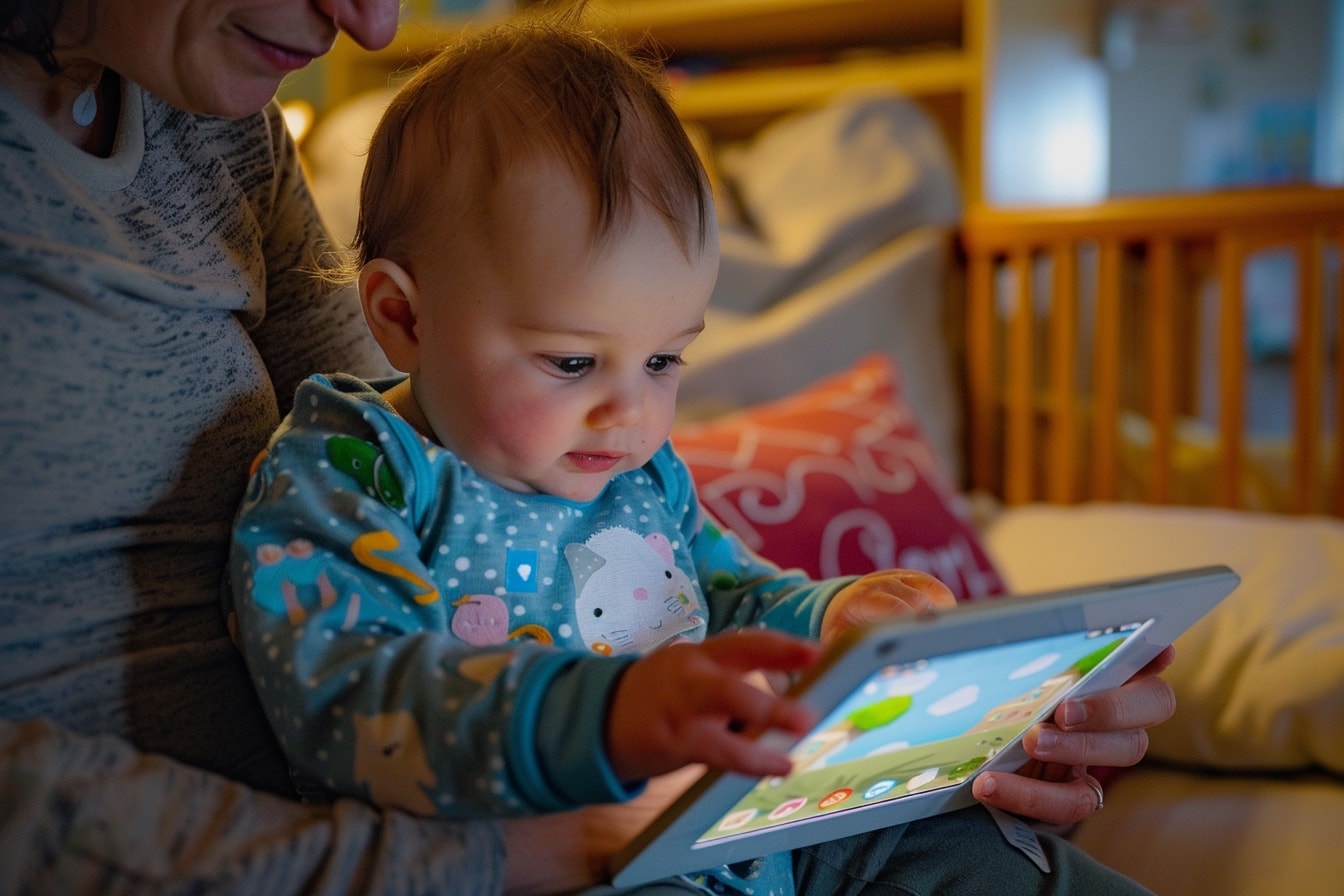
Navigating Screen Time: Dos and Don’ts
As parents, we stand at the crossroads of a digital revolution, grappling with the challenge of balancing the benefits of technology with the risks of overexposure. When it comes to screen time for babies, the dos and don’ts can feel like a daunting maze to navigate. However, armed with knowledge and intentionality, we can chart a course that honors the principles of Montessori philosophy while embracing the opportunities for learning and exploration offered by digital devices.
- Do: Set Clear Boundaries
- Don’t: Use Screens as a Babysitter
- Do: Choose Age-Appropriate Content
- Don’t: Neglect Interactive Engagement
- Do: Model Healthy Screen Habits
Establishing clear boundaries around screen time is essential for maintaining a healthy balance in your child’s life. Set specific limits on the amount of time your child spends with screens each day, and stick to them consistently. By creating a predictable routine, you can help your child develop healthy habits around technology use.
While it may be tempting to rely on screens as a quick fix for keeping your child entertained, using them as a babysitter can have negative consequences in the long run. Avoid using screens as a substitute for meaningful interactions and hands-on activities. Instead, prioritize quality time spent engaging with your child in person.
When selecting digital media for your child, opt for age-appropriate content that aligns with their developmental stage and interests. Look for educational apps, games, and videos that stimulate creativity, critical thinking, and problem-solving skills. Be mindful of the messages and values conveyed in the media your child consumes, choosing content that reflects your family’s values.
While passive screen time can have its place in moderation, prioritize interactive engagement whenever possible. Encourage your child to actively participate in the content they are consuming, whether it’s through tapping, swiping, or vocalizing responses. Engage in co-viewing experiences, discussing the content and asking open-ended questions to foster meaningful dialogue.
As parents, we serve as powerful role models for our children’s behavior. Demonstrate healthy screen habits by practicing mindful use of technology in your own life. Be conscious of the example you set for your child, and strive to maintain a balance between screen time and offline activities. Use screens as a tool for connection and enrichment, rather than as a source of distraction or isolation.
By adhering to these dos and don’ts of navigating screen time for babies, we can create a nurturing environment that supports our children’s growth and development in alignment with Montessori principles. Let us approach technology with intentionality and mindfulness, harnessing its potential to enhance our children’s learning experiences while preserving the essence of childhood exploration and wonder.
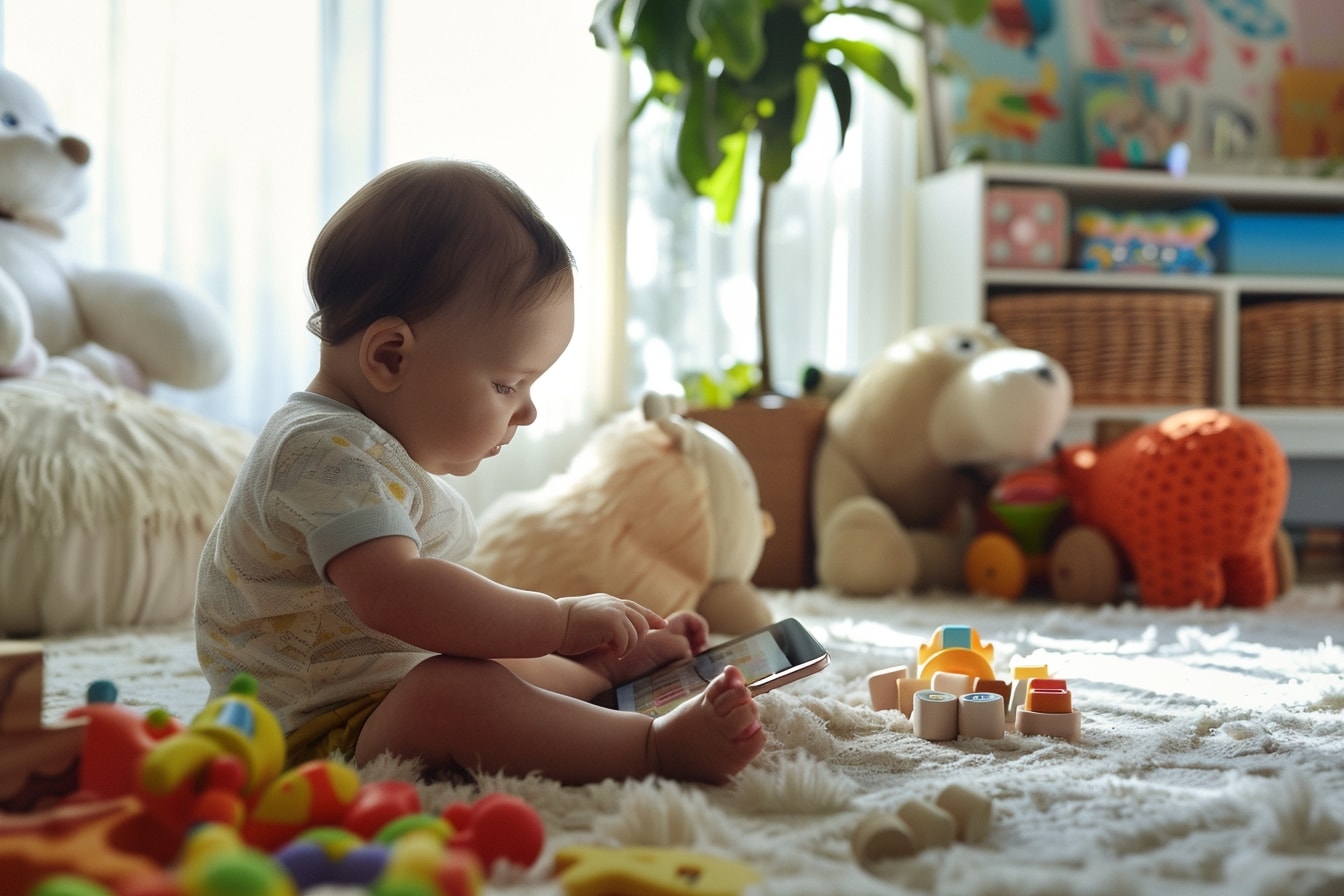
Adapting to Current Trends
In the ever-evolving landscape of early childhood education, it is essential for parents and educators alike to stay attuned to the latest trends and innovations shaping the way our children learn and grow. As we navigate the intersection of Montessori philosophy and modern technology, we must embrace current trends with a discerning eye, considering their potential impact on our children’s development and well-being.
- Interactive Learning Platforms:
- Sensory Learning Apps:
- Interactive Toys and Gadgets:
- Emerging Technologies:
One of the most notable trends in educational technology for babies is the proliferation of interactive learning platforms designed to engage young minds in meaningful ways. From interactive storytelling apps to virtual reality experiences, these platforms offer exciting opportunities for children to explore the world around them in new and immersive ways. However, it is important to approach these trends with caution, ensuring that they align with the principles of Montessori philosophy and support children’s natural curiosity and creativity.
Another emerging trend in educational technology is the development of sensory learning apps designed to stimulate multiple senses and promote hands-on exploration. These apps often incorporate elements of touch, sound, and motion to create engaging learning experiences that appeal to young children’s natural curiosity. While these apps can be valuable tools for enhancing sensory development, it is important to select ones that prioritize active engagement and open-ended exploration, rather than passive consumption.
In recent years, there has been a proliferation of interactive toys and gadgets designed to captivate young children’s attention and foster learning through play. From programmable robots to interactive playsets, these toys offer opportunities for children to engage in hands-on exploration and problem-solving activities. However, it is essential to choose toys that encourage open-ended play and creativity, rather than dictating predetermined outcomes. By selecting toys that align with Montessori principles, parents can ensure that their children’s play experiences support their development and growth.
As technology continues to advance at a rapid pace, new and innovative technologies are constantly emerging that have the potential to revolutionize early childhood education. From augmented reality to artificial intelligence, these technologies offer exciting possibilities for enhancing learning experiences and expanding children’s horizons. However, it is important to approach these technologies with caution, considering their potential impact on children’s social, emotional, and cognitive development. By staying informed and actively engaging with emerging technologies, parents can harness their potential to support their children’s growth and learning in alignment with Montessori principles.
By adapting to current trends in educational technology with a critical eye and a commitment to Montessori principles, we can create a learning environment that nurtures our children’s natural curiosity and fosters their development in meaningful ways. Let us embrace the opportunities offered by technology while remaining mindful of its potential pitfalls, ensuring that our children’s digital experiences support their growth and learning in alignment with Montessori philosophy.
As we reach the culmination of our exploration into the intersection of Montessori principles and modern technology, let us pause to reflect on the journey we have undertaken together. In a world awash with digital distractions and rapid technological advancement, the quest to nurture young minds in alignment with Montessori philosophy is more pertinent than ever.
Throughout this article, we have delved into the complexities of navigating screen time for babies, exploring the challenges and opportunities that arise when technology meets tradition. From setting clear boundaries to curating age-appropriate content, we have uncovered strategies for integrating technology into the Montessori environment in a mindful and intentional manner.
But beyond the practical considerations, our journey has been imbued with a deeper sense of purpose: to honor the innate curiosity and boundless potential of every child. In embracing the Montessori approach to technology, we have affirmed our commitment to fostering independence, creativity, and lifelong learning in our little ones.
As we bid farewell to this chapter, let us carry forward the lessons we have learned and the insights we have gained into our daily lives as parents and educators. Let us continue to engage with technology with discernment and mindfulness, recognizing its potential as a tool for enriching our children’s learning experiences while preserving the essence of childhood wonder and exploration.
May we remain steadfast in our dedication to nurturing young minds in alignment with Montessori principles, weaving a tapestry of learning and discovery that celebrates the unique strengths and potential of each and every child. Together, let us embark on this journey with courage and conviction, knowing that the future holds boundless possibilities for our children and for generations to come.
Want to take your knowledge to the next level? Check out these must-read articles:
- Montessori and Outdoor Exploration: Fostering a Love for Nature
- DIY Montessori Treasure Baskets: Stimulating Senses and Curiosity
Organize your baby’s wardrobe with our baby clothes closet organizer products! Our organizers are designed specifically for baby clothes. Get your baby’s clothes neat and tidy with our selection of organizers – shop now!
Step into Sue Brown's World of Baby Care, where you'll find a treasure trove of knowledge and wisdom waiting to be explored. Sue's dedication to providing accurate and up-to-date information on baby care shines through in every article, blog post, and resource she shares. From newborn essentials to sleep training tips, breastfeeding advice to nurturing your baby's development, Sue covers a wide range of topics that are essential for every parent to know. Her warm and compassionate approach creates a sense of community and reassurance, making her website a safe haven for parents seeking guidance and support. Let Sue Brown be your partner in this beautiful journey of parenthood, as she empowers you to create a loving, nurturing, and thriving environment for your little one.
- The Division of Labor: Creating Equitable Parenting Partnerships - September 29, 2025
- Developmental Toy Rotation Systems - September 27, 2025
- Creating a Responsive Nighttime Parenting Plan - September 20, 2025

